Authentic Indonesian Beef Rendang
Slow-cooked to perfection, beef rendang is the ultimate Indonesian comfort food. Bold spices, creamy coconut, and melt-in-your-mouth meat, this is rendang at its best.
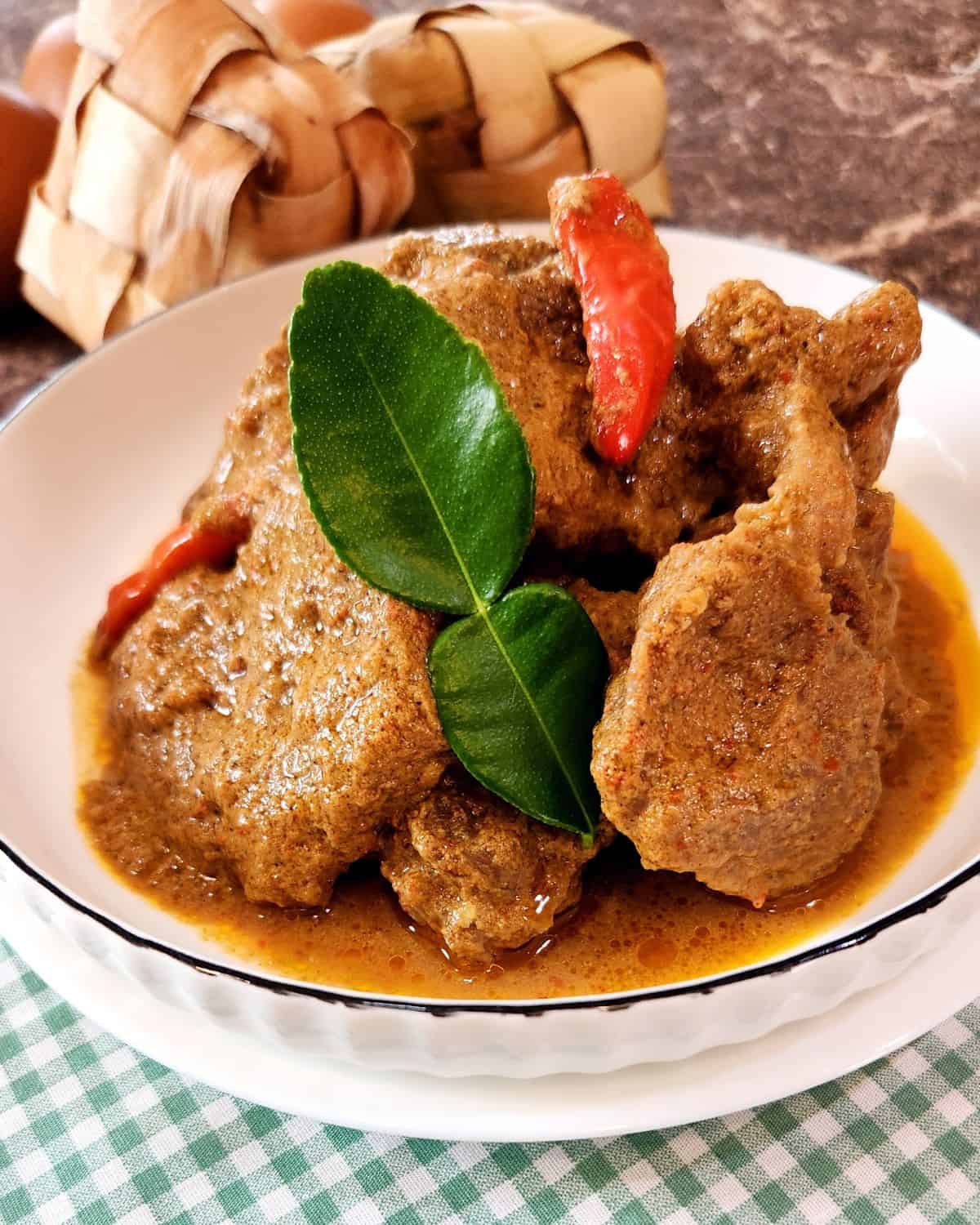
For me, nothing represents Indonesian comfort food better than beef rendang. This slow-cooked dish from West Sumatra was even voted the most delicious dish in the world by The Modern Diplomacy and once you taste the tender beef infused with coconut milk and spices, you’ll understand why.
Just like chicken rendang, or comforting soups such as Soto Betawi, Soto Tangkar, Sop Buntut, and Soto Ayam, rendang has been part of our tables for generations. These dishes aren’t just everyday meals, they shine during special celebrations like Idul Fitri and Idul Adha, when families gather and the table is filled with festive favorites.
Now, let me show you how to make authentic beef rendang at home, step by step.
Why You Will Love This Recipe
Recipe Ingredients
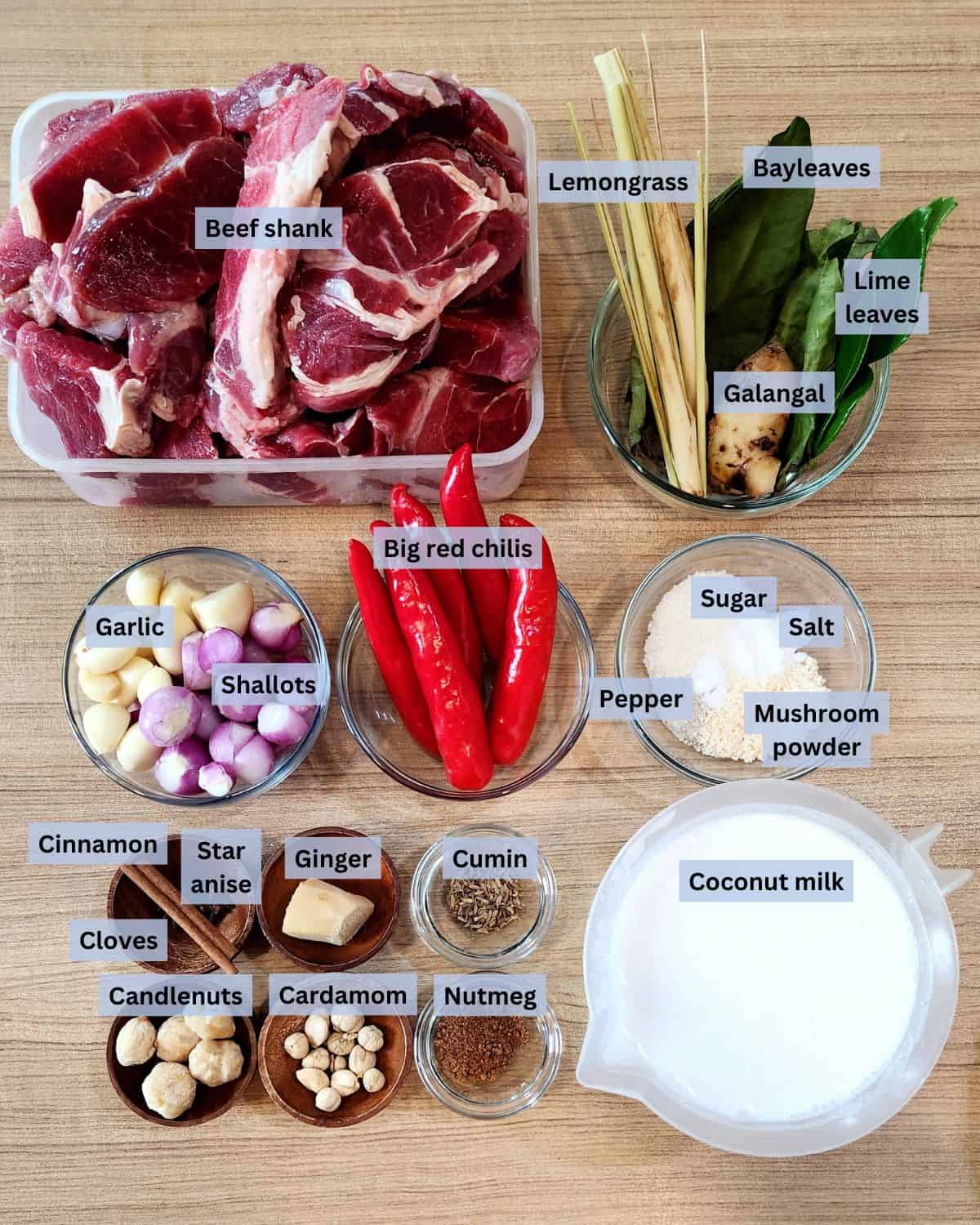
Ingredient Notes
Big red chilis – These give rendang its signature red color without too much heat. They’re more about color and aroma than spiciness.
Chili padi (Bird’s eye chilis) – Add these if you want your rendang extra fiery. Start with a few, then adjust to your spice tolerance.
Galangal – A cousin of ginger with a citrusy, peppery kick. It adds depth and earthiness to the spice paste.
Lemongrass – Bruised and simmered in the sauce, lemongrass infuses a bright, citrusy fragrance that balances the richness of the coconut milk.
Kaffir lime leaves – These leaves add a distinctive floral, citrus aroma that lifts the heavy spices and keeps the dish vibrant. Tear the leaves before throwing them into the pot, they will be more fragrant.
Coconut milk – The backbone of rendang’s creamy texture and nutty sweetness, slowly thickening into a luscious sauce that clings to the beef.
Be sure to check out the full recipe and ingredient list below
Substitutions & Variations
Spices – If you can’t find fresh galangal, turmeric, or lemongrass, you can substitute with ground or dried versions. The flavor won’t be quite as bright, but it still gives a delicious result.
Protein Swap – Traditional rendang isn’t limited to beef! You can substitute the beef with lungs (paru) for a truly authentic twist that’s popular in some regions.
Egg Rendang – Adding boiled eggs into the rendang sauce is a classic variation. The eggs soak up all that rich, spiced coconut gravy, making them a tasty bonus alongside the beef.
Chicken Rendang – For a lighter option, try making it with chicken instead of beef. The cooking time will be shorter, but the flavors are just as comforting.
How to Make Beef Rendang
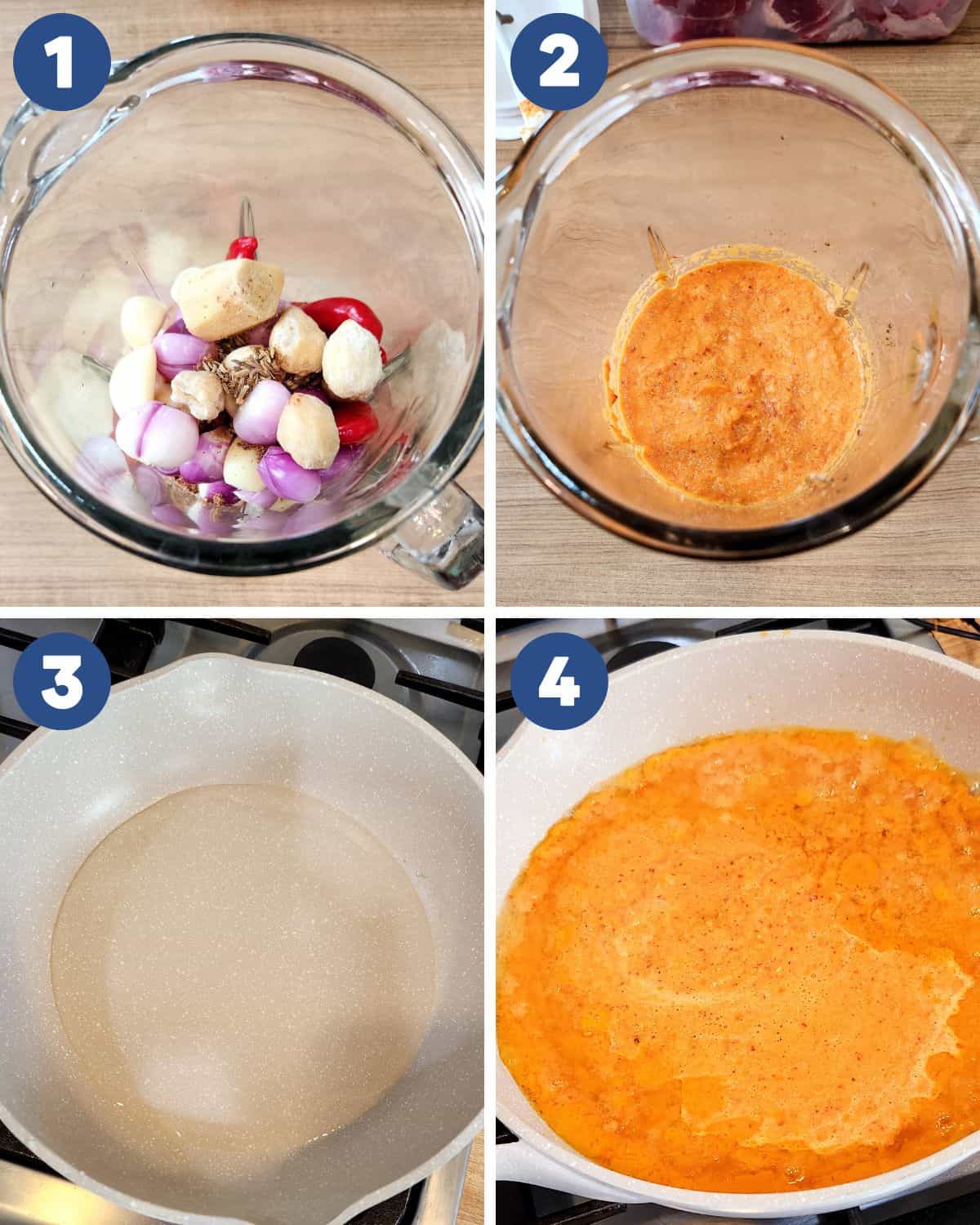
STEP 1. Add red shallots, garlic, chilis, ginger, cumin, nutmeg, and candlenuts to a food processor (Image 1) and blend until smooth (Image 2). Heat a little oil in a wok over medium heat (Image 3), then sauté the paste (Image 4) until fragrant and glossy, 5–8 minutes.
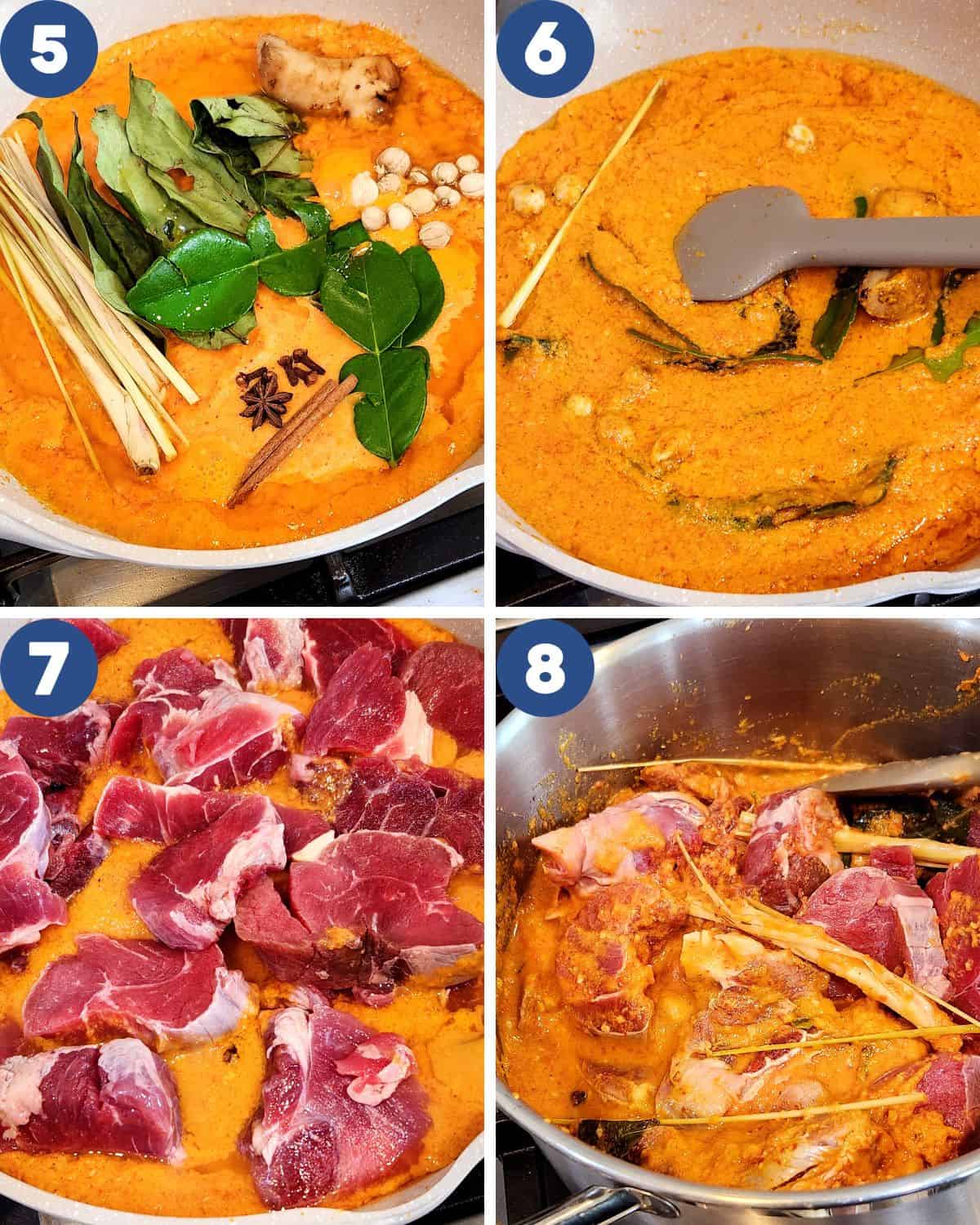
STEP 2. Add lemongrass, bay leaves, kaffir lime leaves, galangal, cardamom, star anise, and the cinnamon stick (Image 5). Stir-fry until aromatic and slightly deeper in color, 2–3 minutes (Image 6). Mind the splatters. Add beef slices (Image 7) and toss until every piece is well-coated and no longer looks raw on the outside, 3–5 minutes (Image 8).
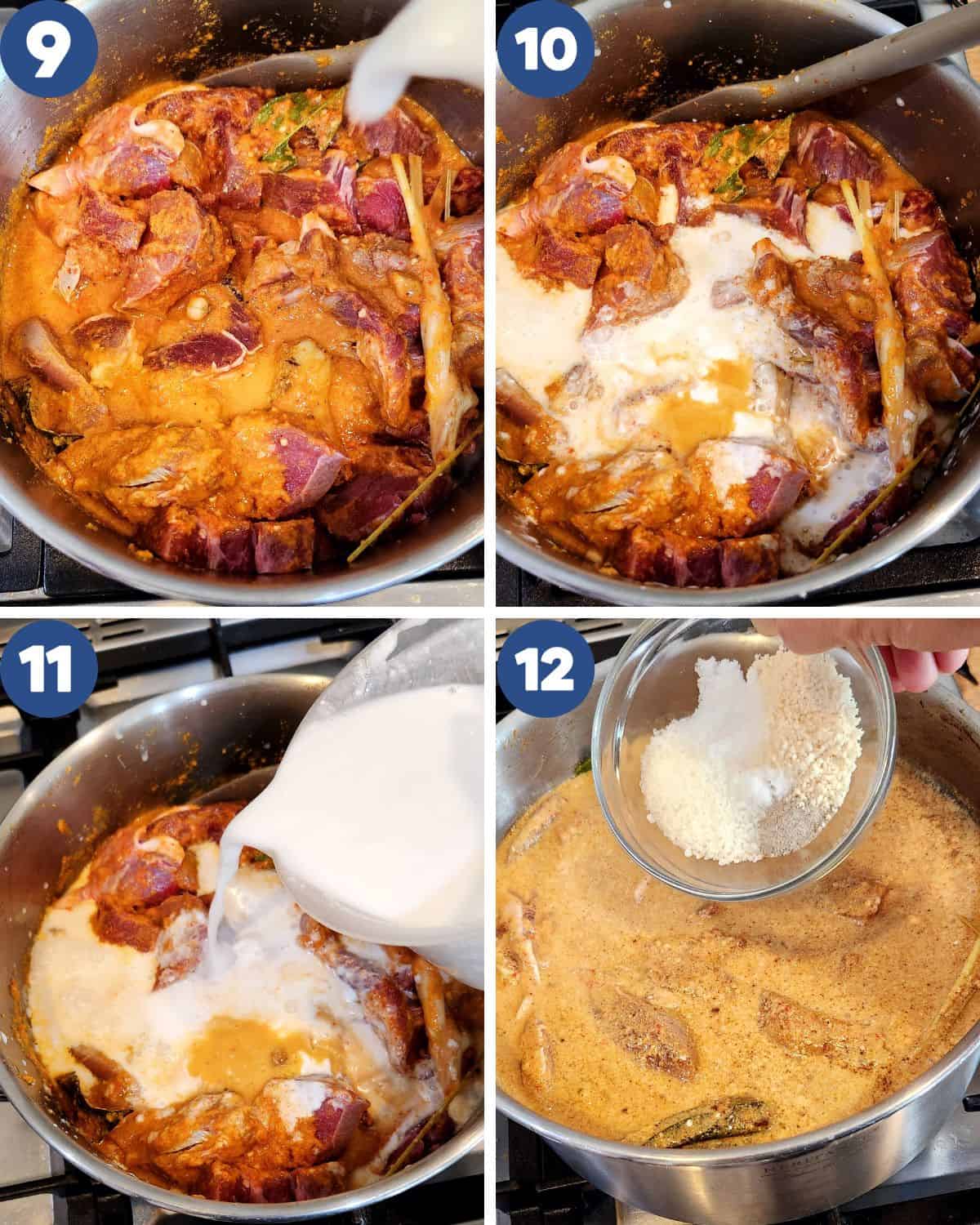
STEP 3. Pour in half of the coconut milk (Images 9, 10) and stir gently for about 10 minutes until it begins to simmer. Add the remaining coconut milk (Image 11), followed by the seasonings (Image 12). Stir well so the flavors blend together, then let it slowly come to a boil.
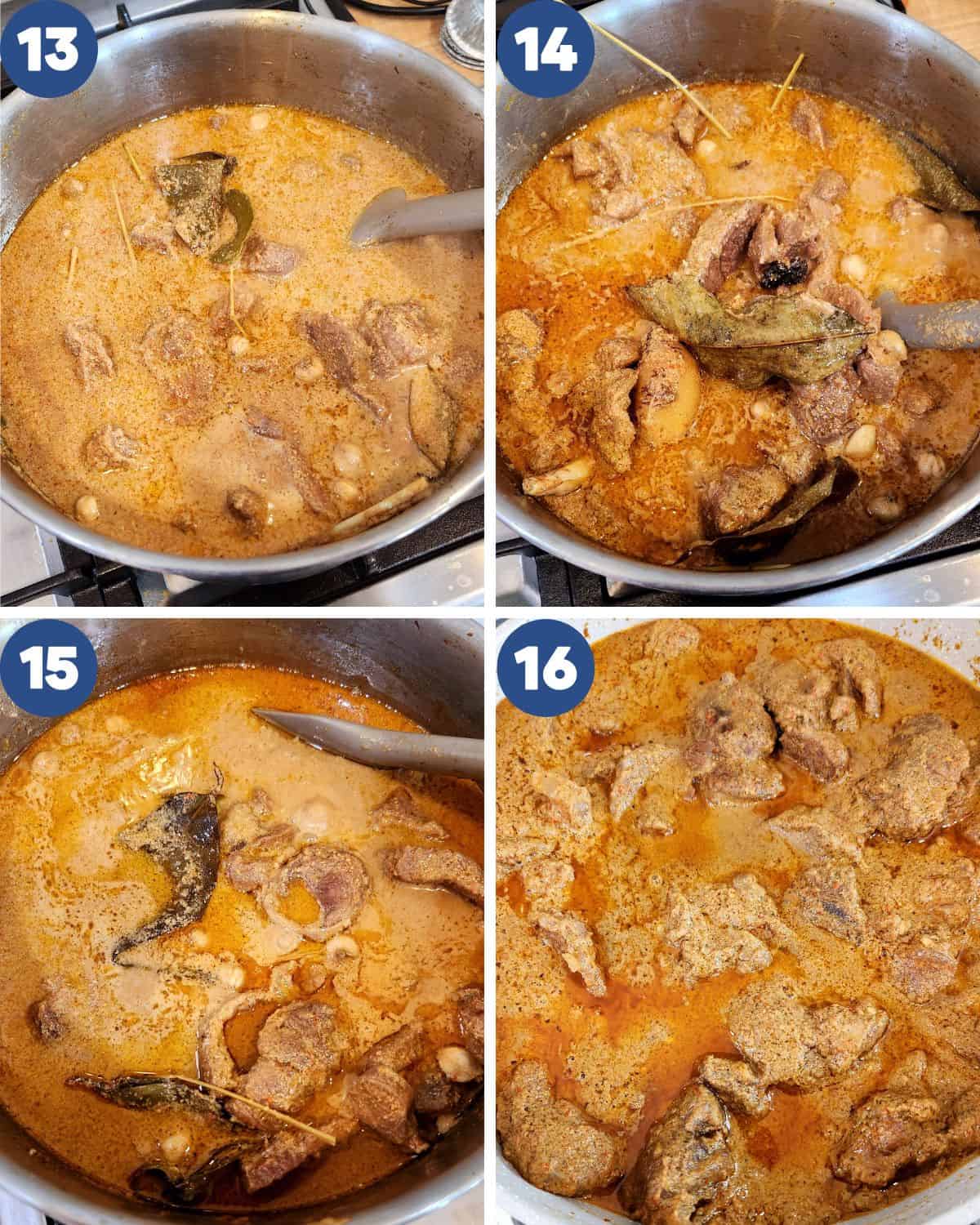
STEP 4. Once it reaches a boil, reduce the heat to low (Image 13). Let it simmer gently for about 1 hour, stirring occasionally, until the oil from the coconut milk starts to separate (Images 14, 15). For a drier, more caramelized rendang, continue cooking for another 30–60 minutes (Image 16). Taste-test the beef to check tenderness, and once it melts in your mouth, your beef rendang is ready to serve.
Pro Tips
- Use the right cut of beef – Choose beef with some marbling (like chuck or brisket). The fat keeps the meat juicy and flavorful during long cooking.
- Cook low and slow – Rendang is not a “quick dinner.” Gentle heat allows the coconut milk and spices to reduce gradually, creating depth and richness.
- Don’t rush the pecah minyak – Wait until the oil separates from the coconut milk; that’s when you know the flavors have bloomed and the rendang is truly authentic.
- Stir occasionally, not constantly – Give it time to simmer undisturbed, but stir now and then to prevent sticking at the bottom.
- Adjust the spice level – Big red chilis give gorgeous color without too much heat. For more fire, toss in some chili padi (bird’s eye chilis).
- Make it ahead – Rendang tastes even better the next day as the flavors deepen. It’s the kind of dish that rewards patience twice!
- For a drier style – Extend the cooking for an extra 30–60 minutes until the sauce darkens and clings tightly to the beef.
- Batch-friendly – Double the recipe if you can. It freezes beautifully and reheats without losing flavor.
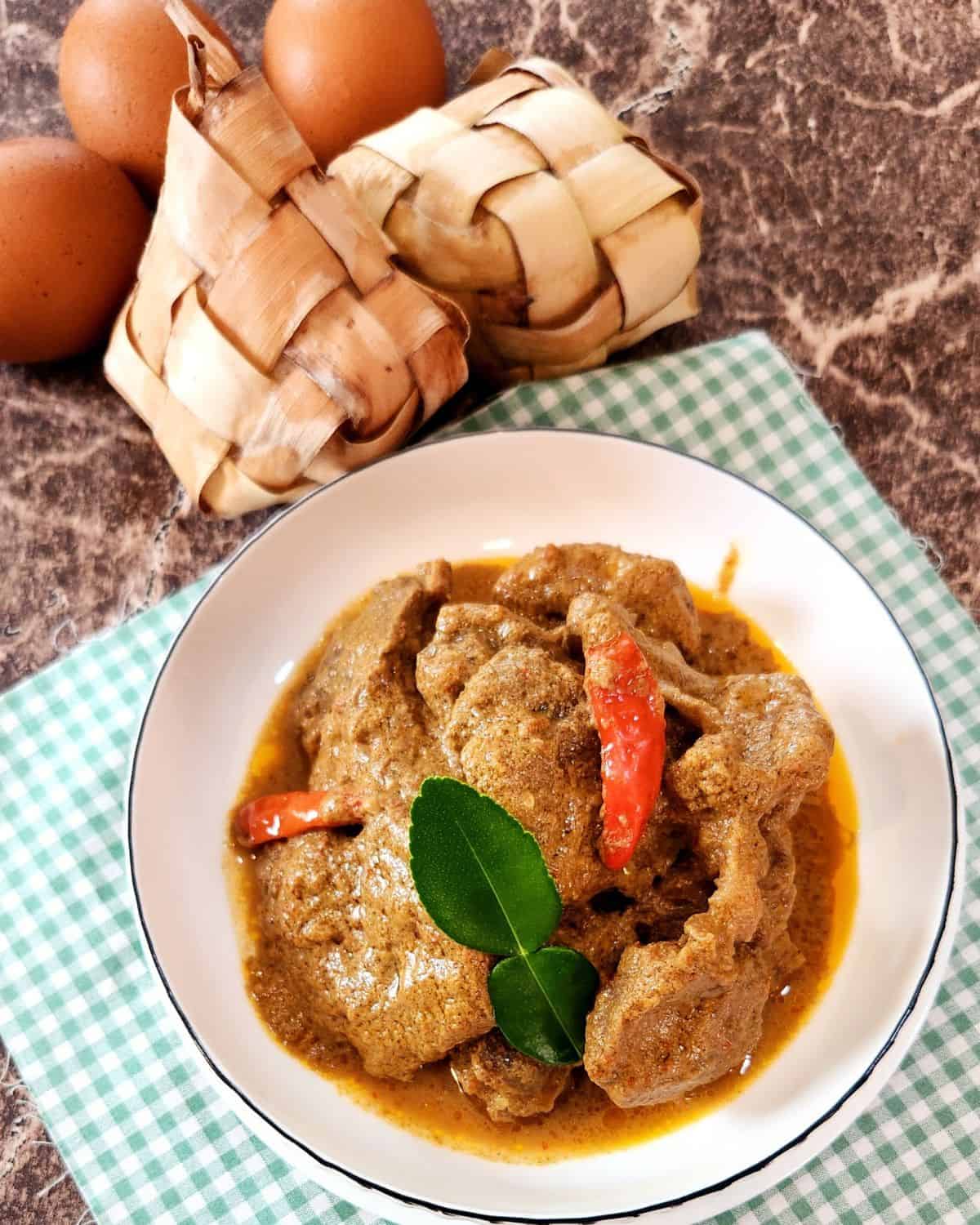
Serving Suggestions
Rendang is at its best with a generous plate of warm, fluffy rice or ketupat to soak up every drop of the rich sauce. For a true Indonesian feast, pair it with dishes like chicken curry, soto ayam, or soto tangkar, fish curry, and perkedel as side dish.
Balance the spice with something refreshing to drink. Butterfly pea tea or lemongrass tea are both perfect companions. And don’t forget dessert! A sweet bowl of pulut hitam (black glutinous rice porridge) or soft, chewy kue lumpang will gently cool the heat and round out your meal.
FAQs about Beef Rendang
Beef rendang is made with beef slow-cooked in coconut milk, red chilis, galangal, lemongrass, kaffir lime leaves, and aromatic spices until tender and flavorful.
While both are rich and spiced, curry usually has more gravy. Rendang, on the other hand, is simmered until the sauce reduces and clings to the beef, creating a thicker, more caramelized finish.
Rendang was voted the world’s most delicious dish by The Modern Diplomacy. Its slow-cooked tenderness, deep spices, and rich coconut base make it unforgettable.
Cuts with some fat and connective tissue like chuck, brisket, or short ribs are best. They stay juicy and turn tender during long cooking.
Traditionally, yes, but you can adjust the heat. Big red chilis add color without too much spice, while chili padi (bird’s eye chilis) make it fiery.
Storage
Fridge: Store cooled beef rendang in an airtight container for up to 5 days. The flavors actually deepen overnight, making it even tastier the next day.
Freezer: Rendang freezes beautifully. Pack it in portions and keep for up to 2 months. Thaw overnight in the fridge before reheating.
Reheating: Warm gently on the stovetop over low heat, adding a splash of water or coconut milk if it looks too dry. You can also reheat in the microwave, but stir halfway to keep the heat even.
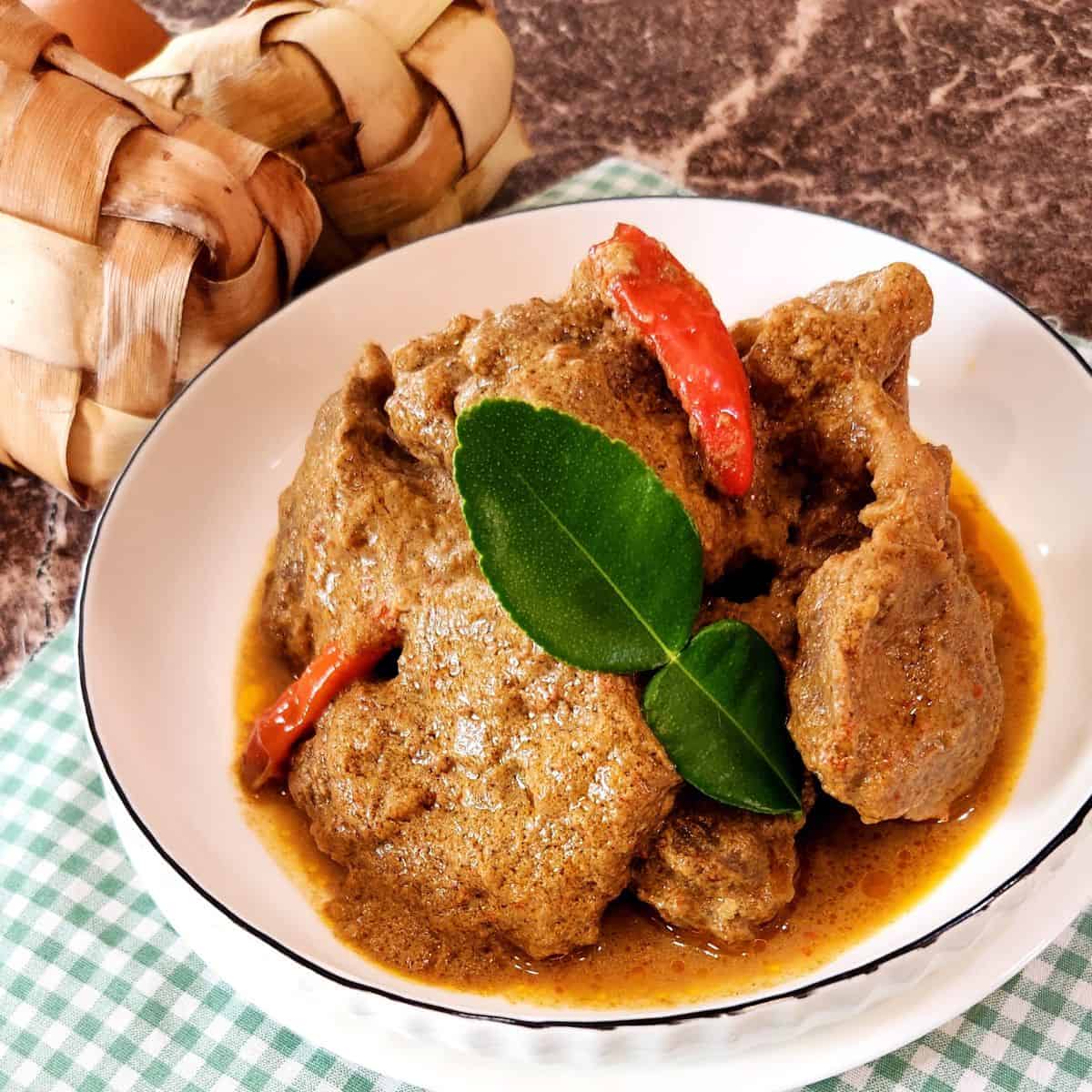
Beef Rendang
Equipment
- 1 pot
Ingredients
- 1 kg beef shank
- 8 pcs garlic
- 16 pcs shallots
- 6 pcs red chilis
- 1 pcs cinnamon stick
- 2 pcs cloves
- 2 cm ginger
- 1 pcs star anise
- 1 tsp cumin
- 1 tsp nutmeg
- 10 pcs cardamom
- 5 pcs candlenuts
- 3 pcs bay leaves
- 3 pcs lime leaves
- 2 pcs lemongrass
- 1 pcs galangal
- 600 ml coconut milk
- 3 tsp salt
- 2 tsp sugar
- 1 tsp mushroom powder
- 1 tsp pepper
Instructions
- Add red shallots, garlic, chilis, ginger, cumin, nutmeg, and candlenuts to a food processor (Image 1) and blend until smooth (Image 2). Heat a little oil in a wok over medium heat (Image 3), then sauté the paste (Image 4) until fragrant and glossy, 5–8 minutes.
- Add lemongrass, bay leaves, kaffir lime leaves, galangal, cardamom, star anise, and the cinnamon stick (Image 5). Stir-fry until aromatic and slightly deeper in color, 2–3 minutes (Image 6). Mind the splatters. Add beef slices (Image 7) and toss until every piece is well-coated and no longer looks raw on the outside, 3–5 minutes (Image 8).
- Pour in half of the coconut milk (Images 9, 10) and stir gently for about 10 minutes until it begins to simmer. Add the remaining coconut milk (Image 11), followed by the seasonings (Image 12). Stir well so the flavors blend together, then let it slowly come to a boil.
- Once it reaches a boil, reduce the heat to low (Image 13). Let it simmer gently for about 1 hour, stirring occasionally, until the oil from the coconut milk starts to separate (Images 14, 15). For a drier, more caramelized rendang, continue cooking for another 30–60 minutes (Image 16). Taste-test the beef to check tenderness, and once it melts in your mouth, your beef rendang is ready to serve.
Notes
- Use the right cut of beef – Choose beef with some marbling (like chuck or brisket). The fat keeps the meat juicy and flavorful during long cooking.
- Cook low and slow – Rendang is not a “quick dinner.” Gentle heat allows the coconut milk and spices to reduce gradually, creating depth and richness.
- Don’t rush the pecah minyak – Wait until the oil separates from the coconut milk; that’s when you know the flavors have bloomed and the rendang is truly authentic.
- Stir occasionally, not constantly – Give it time to simmer undisturbed, but stir now and then to prevent sticking at the bottom.
- Adjust the spice level – Big red chilis give gorgeous color without too much heat. For more fire, toss in some chili padi (bird’s eye chilis).
- Make it ahead – Rendang tastes even better the next day as the flavors deepen. It’s the kind of dish that rewards patience twice!
- For a drier style – Extend the cooking for an extra 30–60 minutes until the sauce darkens and clings tightly to the beef.
- Batch-friendly – Double the recipe if you can. It freezes beautifully and reheats without losing flavor.

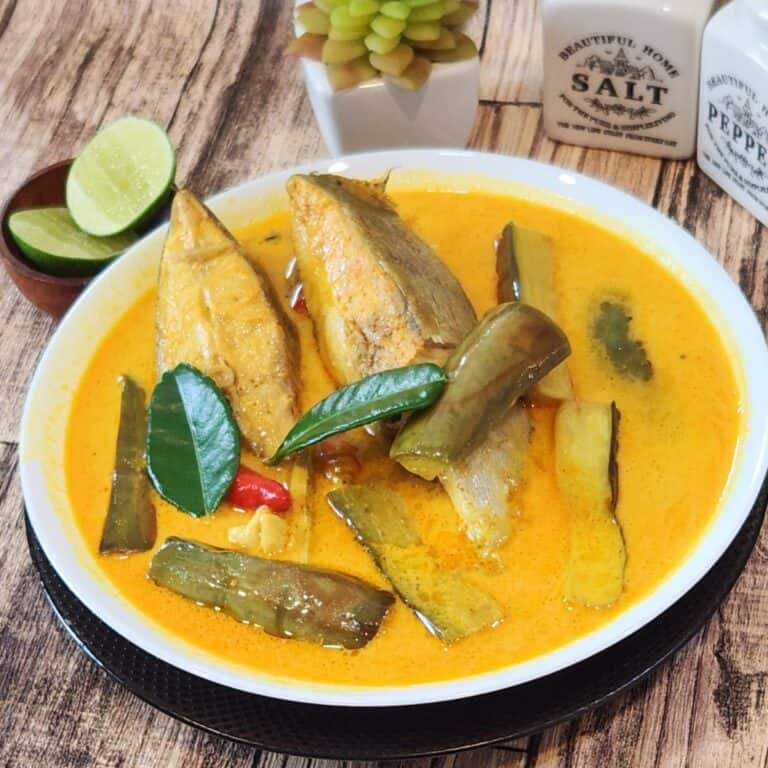

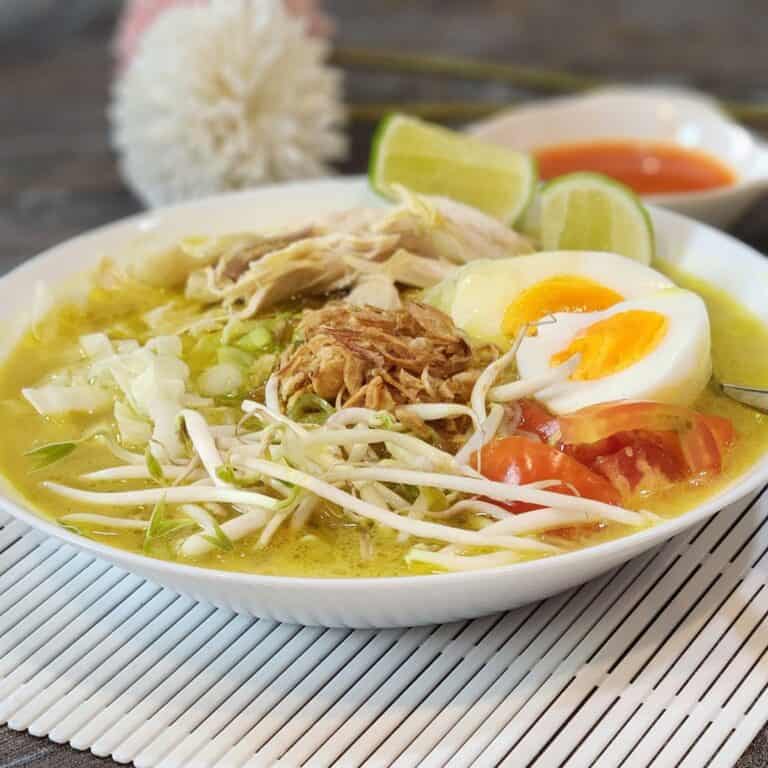

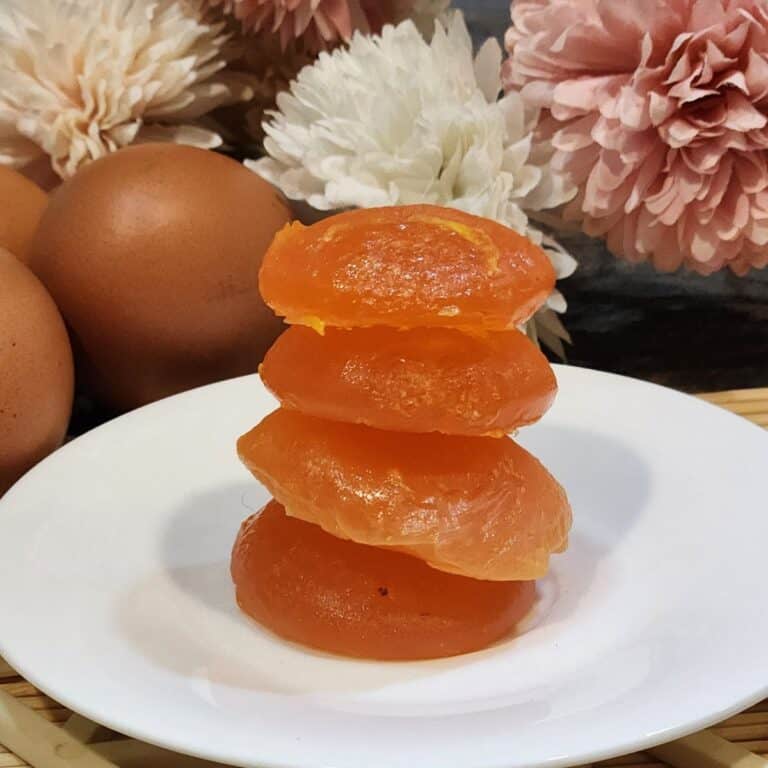

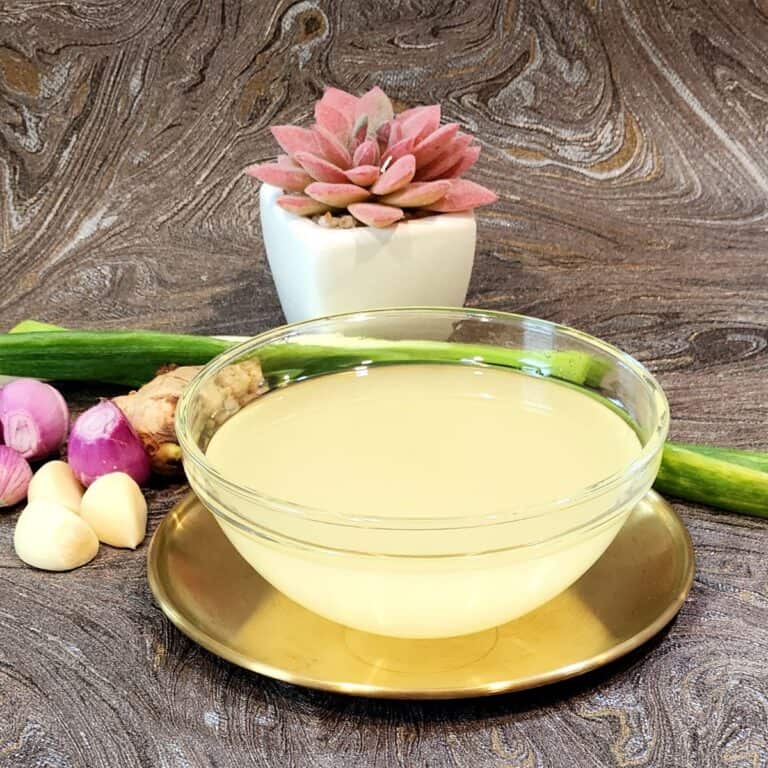
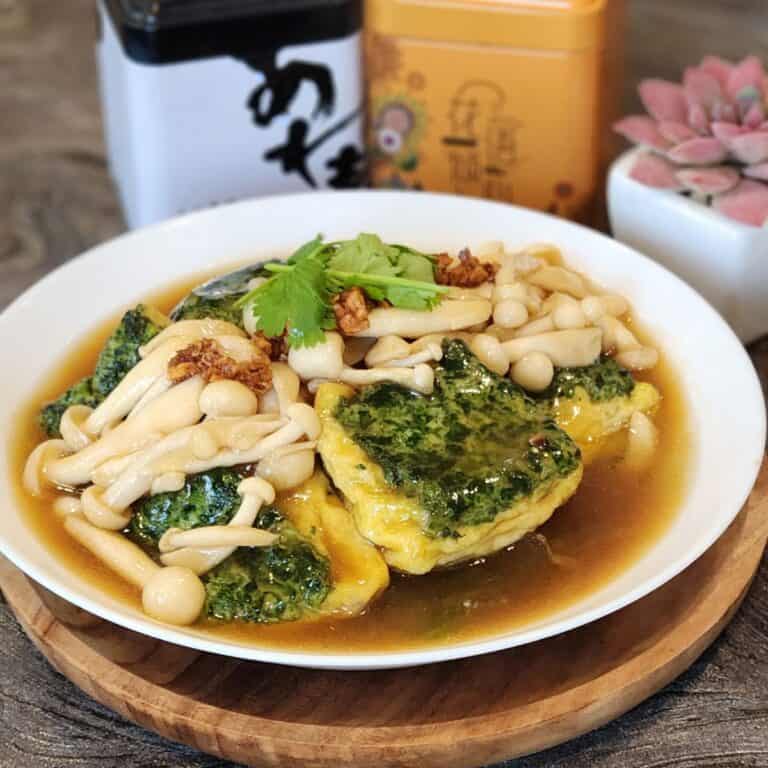
This is an authentic Indonesian beef rendang recipe. I have always used this recipe to make rendang for Idul Fitri or Idul Adha celebrations. It’s just the perfect recipe!